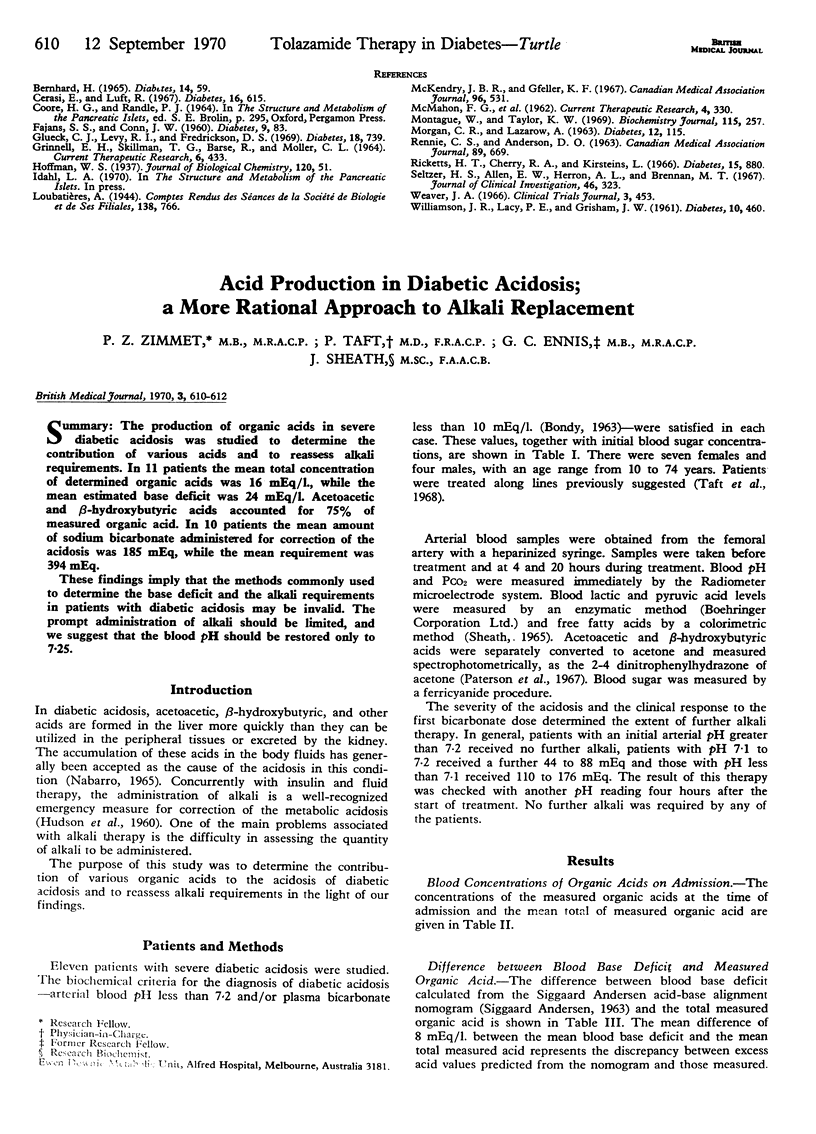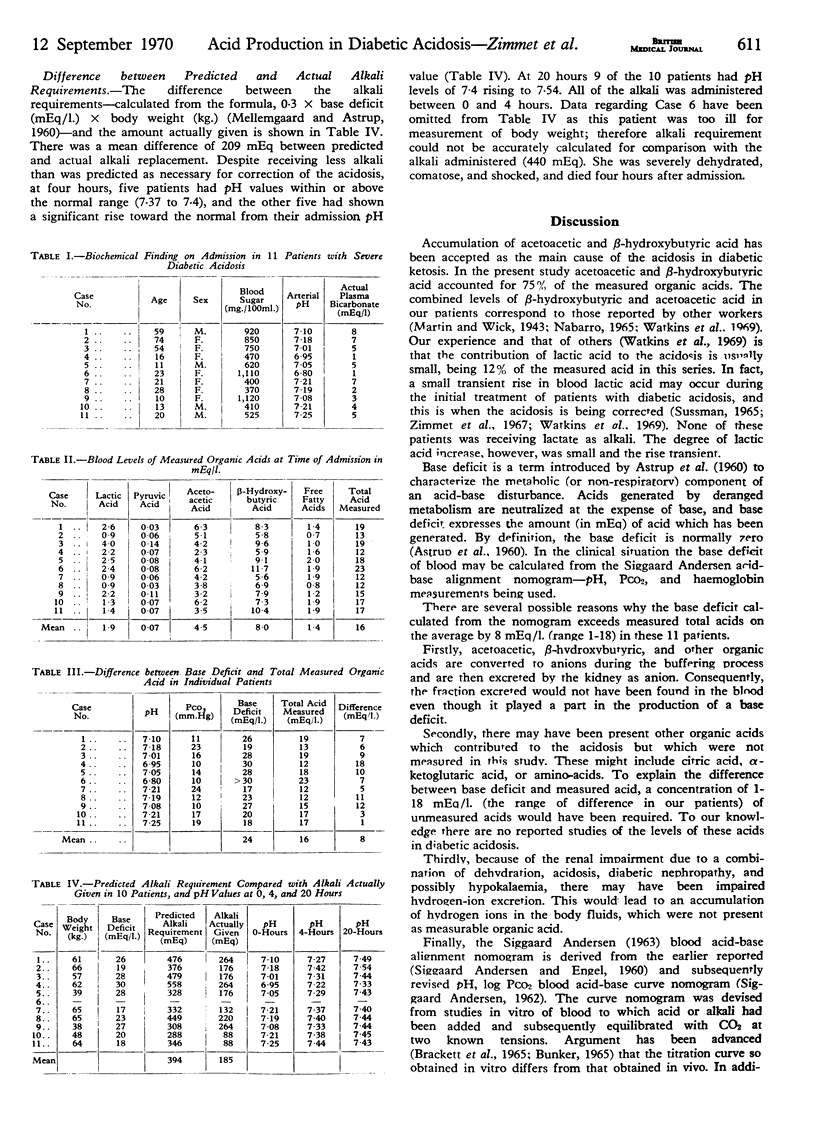Abstract
The production of organic acids in severe diabetic acidosis was studied to determine the contribution of various acids and to reassess alkali requirements. In 11 patients the mean total concentration of determined organic acids was 16 mEq/l., while the mean estimated base deficit was 24 mEq/l. Acetoacetic and β-hydroxybutyric acids accounted for 75% of measured organic acid. In 10 patients the mean amount of sodium bicarbonate administered for correction of the acidosis was 185 mEq, while the mean requirement was 394 mEq.
These findings imply that the methods commonly used to determine the base deficit and the alkali requirements in patients with diabetic acidosis may be invalid. The prompt administration of alkali should be limited, and we suggest that the blood pH should be restored only to 7·25.
Full text
PDF


Selected References
These references are in PubMed. This may not be the complete list of references from this article.
- ADDIS G. J., THOMSON W. S., WELCH J. D. BICARBONATE THERAPY IN DIABETIC ACIDOSIS. Lancet. 1964 Aug 1;2(7353):223–225. doi: 10.1016/s0140-6736(64)90180-1. [DOI] [PubMed] [Google Scholar]
- ANDERSEN O. S., ENGEL K. A new acid-base nomogram. An improved method for the calculation of the relevant blood acid-base data. Scand J Clin Lab Invest. 1960;12:177–186. doi: 10.3109/00365516009062420. [DOI] [PubMed] [Google Scholar]
- ANDERSEN O. S. The pH-log pCO2 blood acid-base nomogram revised. Scand J Clin Lab Invest. 1962;14:598–604. doi: 10.1080/00365516209051290. [DOI] [PubMed] [Google Scholar]
- ASTRUP P., JORGENSEN K., ANDERSEN O. S., ENGEL K. The acid-base metabolism. A new approach. Lancet. 1960 May 14;1(7133):1035–1039. doi: 10.1016/s0140-6736(60)90930-2. [DOI] [PubMed] [Google Scholar]
- BUNKER J. P. THE GREAT TRANS-ATLANTIC ACID-BASE DEBATE. Anesthesiology. 1965 Sep-Oct;26:591–594. [PubMed] [Google Scholar]
- HUDSON B., BICK M., MARTIN F. I. Observations on the treatment of severe diabetic ketosis. Australas Ann Med. 1960 Feb;9:34–40. doi: 10.1111/imj.1960.9.1.34. [DOI] [PubMed] [Google Scholar]
- Martin H. E., Wick A. N. QUANTITATIVE RELATIONSHIPS BETWEEN BLOOD AND URINE KETONE LEVELS IN DIABETIC KETOSIS. J Clin Invest. 1943 Mar;22(2):235–241. doi: 10.1172/JCI101388. [DOI] [PMC free article] [PubMed] [Google Scholar]
- Paterson P., Sheath J., Taft P., Wood C. Maternal and foetal ketone concentrations in plasma and urine. Lancet. 1967 Apr 22;1(7495):862–865. doi: 10.1016/s0140-6736(67)91426-2. [DOI] [PubMed] [Google Scholar]
- Sheath J. Estimation of plasma non-esterified fatty acids and triglyceride fatty acids by thin-layer chromatography and colorimetry. Aust J Exp Biol Med Sci. 1965 Aug;43(4):563–572. doi: 10.1038/icb.1965.42. [DOI] [PubMed] [Google Scholar]
- Taft P., Stockigt J. R., Harrison J. W., Cameron D. P. Diabetic ketoacidosis: its causes and their prevention. Med J Aust. 1968 Nov 9;2(19):825–829. doi: 10.5694/j.1326-5377.1968.tb83227.x. [DOI] [PubMed] [Google Scholar]
- Watkins P. J., Smith J. S., Fitzgerald M. G., Malins J. M. Lactic acidosis in diabetes. Br Med J. 1969 Mar 22;1(5646):744–747. doi: 10.1136/bmj.1.5646.744. [DOI] [PMC free article] [PubMed] [Google Scholar]


